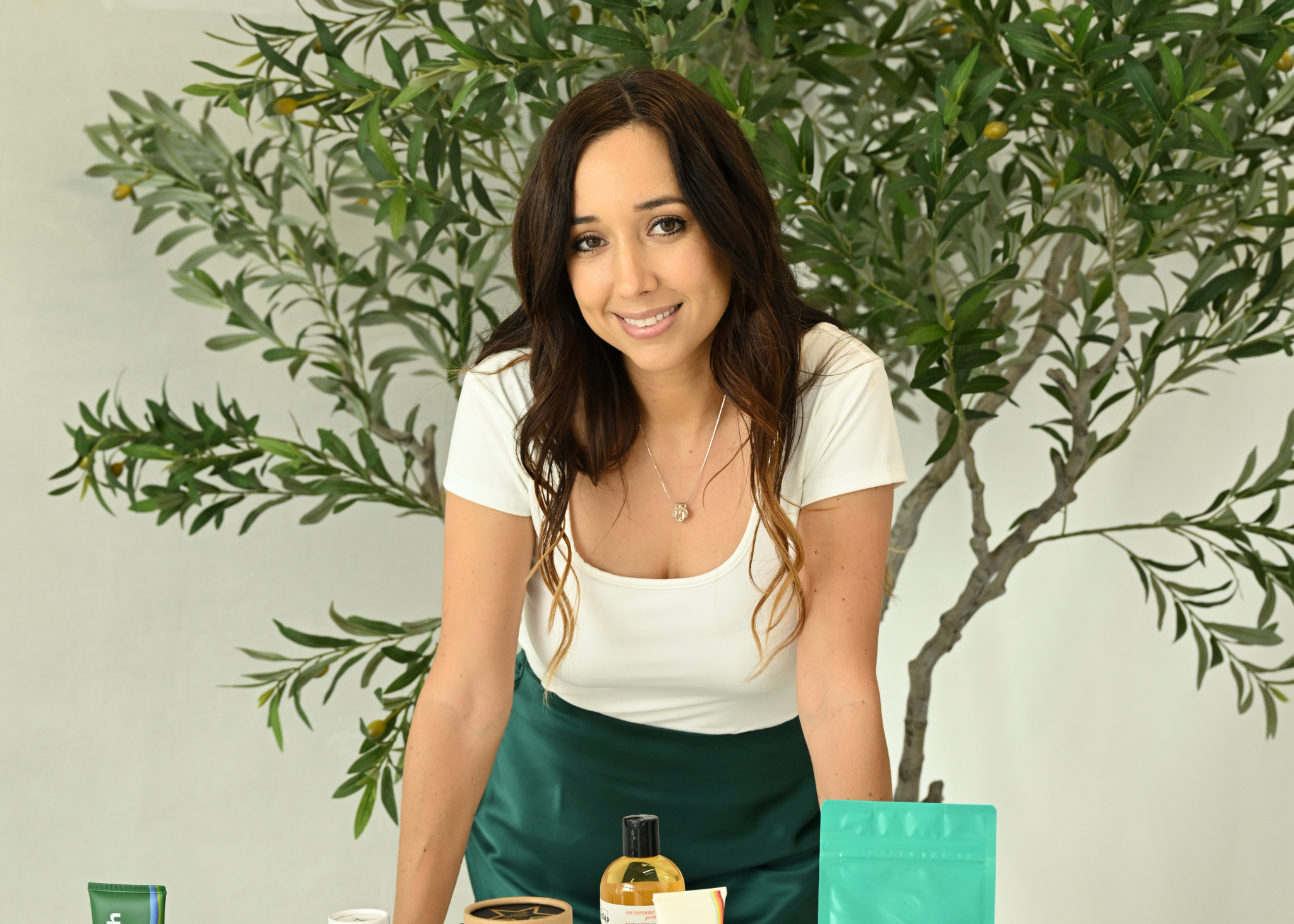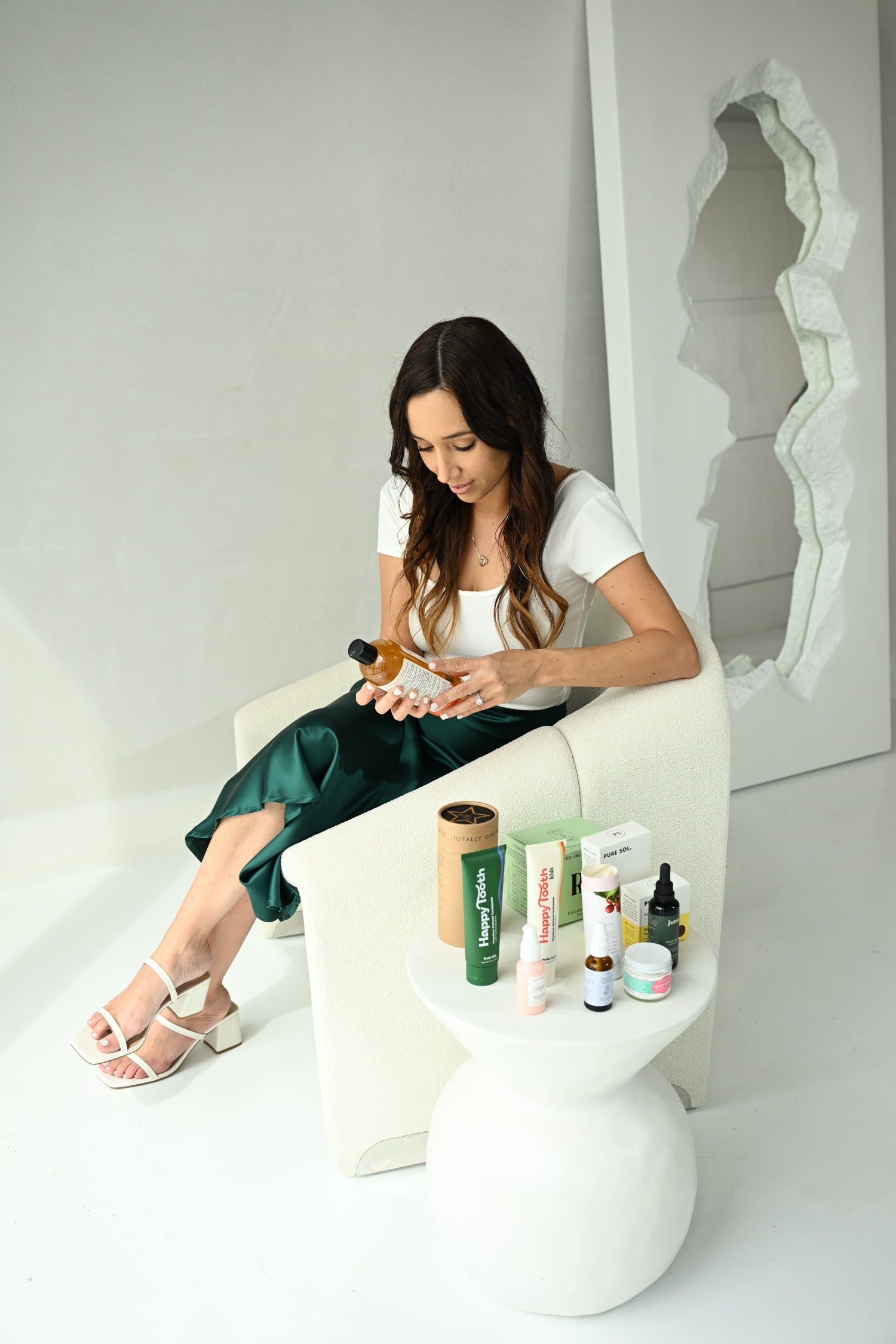Gua sha is something I only started doing this year. If you saw Episode 2 of Aging Gracefully or our quick IG snippet, you know one of our favorite estheticians swears by it—and for good reason. Done right, Gua Sha is a fast, low-tech way to reduce puffiness, release jaw/forehead tension, and boost that glow.
In this guide, we'll dive deeper into this centuries-old technique, compare conflicting information, and go through each of the steps and ideal order (complete with a cheat sheet)!
What Is Gua Sha?
Gua Sha is a gentle stroking technique using a smooth tool (stone, stainless steel) at a low angle to mobilize lymph and fascia, encourage circulation, and relax muscles.
Gua sha originated in traditional Chinese medicine (TCM) centuries ago for various therapeutic benefits. Back then, practitioners used smooth, everyday objects like porcelain spoons and coin edges to scrape oiled skin and promote circulation and relief. Historically it focused on the back, neck, and limbs.
Gua means to scrape. Sha refers to petechiae, which are bruise like marks that tended to appear on the skin after this TCM treatment. (source)
Modern Gua Sha is a gentler evolution: lighter, lymph-friendly strokes aimed at de-puffing and muscle release. Tools have likewise shifted from horn and ceramic to carved stones (jade, rose quartz, obsidian) and stainless steel with beveled, curved edges to hug different parts of the body. In this guide, we are discussing facial Gua Sha.
Who Can Gua Sha?
For those looking for less facial puffiness and softer expression lines, Gua Sha is a great step to add to your skincare routine. However, it's not for everyone.
If you have cystic acne, open cuts, sunburn, rashes or your skin barrier is extra sensitive, then Gua Sha is not recommended. It's best to wait until your symptoms have resolved and your face is more clear. Similarly, it is not recommended if you get Botox and Fillers. You should wait a minimum of 2 weeks before doing Gua Sha if you get these treatments.
Benefits Of Gua Sha
Gua Sha is often touted for its anti-aging benefits, but don't expect a miracle facelift. You can reasonably expect less puffiness, subtle lift from de-swelling, softer expression lines from tension release, and better product absorption (a huge win!).
Over time and with consistent use (3-5 times a week), your skin should look calmer, more evenly shaped (less "bags"), and you might even notice an improved jaw and neckline.
Conflicting Gua Sha Advice
Having introduced this into my skincare routine this year, I obviously did my research! I wanted to make sure I was optimizing the benefits and not leaving anything on the table. In my quest for knowledge, I came across some bits of conflicting information that I would like to share here for your own benefit. I wouldn't say there is a definitive "right" way for any of these, but simply different approaches and preferences.
Cold vs. Warm Gua Sha
Most of the sources I read, namely from estheticians, encouraged incorporating cold therapy into your Gua Sha routine by cooling or refrigerating your tool before use. It's recommended for obvious reasons—the cold is an anti-inflammatory. It can help de-puff and tighten the skin. It's also soothing.
However, there were other sources, namely Traditional Chinese Medicine practitioners, who advised against cold tools and instead encouraged warming your Gua Sha tool. They believe heat helps improve circulation and blood flow, whereas the cold can constrict and slow down bodily processes. (please note: heat is never encouraged for those with melasma, rosacea or heat-sensitive skin conditions).
Both made excellent points and I don't believe there's one way to do it. In fact, you could even consider using cold Gua Sha in the mornings when you want to depuff your face for the day and warm Gua Sha in the evening to release tension when your body goes into repair mode. Can't decide? Just do room temperature, hah!
Upward vs. Downward Neck Motion
Most sources encouraged an upward motion when doing Gua Sha on the neck. This is because the upward motion is associated with toning and muscle lifting. Most people today use Gua Sha for cosmetic reasons.
However, if you are looking for benefits from lymphatic drainage, then you will want to move your tool down toward the collarbones (where lymph empties).
In my recommended steps below, I actually encourage you to do both! Start your Gua Sha session with upward movement for its toning benefits, then finish with downward to reap the lymphatic benefits. (I'm only referring to the neck area here, do not downward wipe your face).
Choosing Your Gua Sha Tool
There are many different tool shapes and each has its benefits. Some are designed for hair or larger parts of the body. If you're new to this, I say go with the classic heart shape. It has the curvatures you need for a complete facial Gua Sha session.
As for materials, you can really go down the rabbit hole here. The internet's opinion here was mixed. Some materials boast spiritual benefits and different physical properties.
My best advice is just to make sure you use a tool made of natural stone or stainless steel. Do not use resin Gua Sha tools. Resin tools are just plastic—not exactly a material I want to be rubbing all over my face. For those who want to deep dive, here are the materials I came across in my research and some buying tips:
- Jade - This is the classic choice. It's a tiny bit grippy and is cooler at the start (though it warms up with use). Jade is believed to have calming and "harmonizing" energy. Counterfeit Jade, however, is a huge problem. Nearly all those "Jade" tools on Amazon for $5 are not Nephrite Jade, the authentic, original version. If it's Nephrite Jade, the seller should be able to produce a COA (Certificate of Analysis). "Alternative" Jades are referred to as Serpentine, Aventurine, or are just made of glass. This doesn't make them "bad" or toxic, however, just a good thing to know if you are wanting to purchase Jade for its more spiritual benefits.
- Rose Quartz - Rose is cooler and less grippy than Jade. It is, however, more fragile. It also has spiritual benefits tied to love, compassion and self-soothing. When buying, make sure to check for hairline fractures that can easily crack later. This one also has some counterfeits out there, so ask the seller for a COA.
- Obsidian - This is volcanic glass and it will cost ya! This is the most expensive option on the list. It's said to release negative energy. It's very smooth and on the warmer side for those who prefer warm Gua Sha. Beware though, it's pretty fragile. Handle with care. Like the previously mentioned materials, make sure to ask for the COA—especially because of the price tag on this one.
- Stainless Steel - This is probably your best, no frills choice. Stainless steel is easy to clean and disinfect and has a cooling effect. it's non-porous, smooth, and basically unbreakable. Look for 304 grade and make sure the edges are not sharp.
- Ceramic/Porcelain - not as popular and I don't really recommended because you don't really know what's going into the glaze and it can chip, revealing a very rough texture underneath.
- Resin/Acrylic - the worst choice on the list since it's plastic. It's lightweight and break resistant, but not as smooth, no cooling or warming effect, and often has a strong chemical odor.
How To Gua Sha
Gua Sha is best done at the end of your skincare routine on a clean and recently oiled face. I prefer it as an evening ritual, since this is when I have more time and I don't like to slather on too much oil in the morning. However, you can do this in the morning, and many do. In the morning it's great to use a cold tool to help depuff the face and under eyes.
The Materials
- A Gua Sha Tool (I'm linking a Stainless Steel one, since it's the easiest to source, clean, and is virtually unbreakable).
- A Slow Absorbing Face Oil
- A Mirror
- Clean Hands
- Your Favorite Song
Your face, hands and tools should be clean. if you're following the ideal evening skincare routine order, you will naturally end with a face oil. This is the perfect time to Gua Sha! Put on your favorite song, because this shouldn't last past that.
The Movements
I watched about a dozen videos on the topic and most of them followed a similar order. Here's what I suggest:
- The Neck (upward for toning) - up the sides of the neck to the jawline.
- The Jawline - along jaw toward the ear; tiny wiggle at the end.
- The Cheeks - start at the corner of the mouth, and move up and back toward the ear.
- Under The Eyes - be extra gentle here, the skin under your eyes is thinner; start at the base of the nose and follow the shape of your eye toward your hairline.
- Across The Brown Bone - start from the middle of your face and follow the arch of your brow bone, then move upward toward hairline. Alternatively, you can start at the tip of your nose and turn at your brow toward hairline.
- The Forehead - from the brow bone upward toward the hairline.
- The Neck (downward for drainage) - down the sides of the neck to the collarbones.

It seems like a lot, but the entire session should only last about 2-3 minutes—shorter than your favorite song! Here are some tips to keep in mind:
- Use light pressure. This shouldn't hurt or leave you feeling beat.
- In general, the motions are always upward and outward.
- Each step should be repeated 3 - 5 times before moving on to the next area.
- A slow absorbing oil is best to make sure the application will last you through the entire Gua Sha session. If you lose glide, reapply oil. You generally will use more oil than your typical serum application.
- Do not glide across active acne. Work around it.
- Repeat 3 - 5 times a week for best results.
- Don't forget to wash your tools with mild soap and water. Dry fully.
Gua Sha—How To Start And Next Steps
Gua sha works best when you keep it simple and consistent. Use a clean tool, light pressure, and a little oil; follow the basic flow 3–5 times per path, 3–5 days a week. Personally, I am a fan! It doesn't take too long and is simple enough to keep up with.
Like all skincare trends, consistency beats perfection—two mindful minutes on the regular will do more for your face than any once-a-month marathon. If you want results, keep doing it.
Ready to start? Save the image above!




![Aging Gracefully: Spa Treatments [Episode 3]](http://www.ivyandfields.com/cdn/shop/articles/aging_gracefully_spa_treatments_botox_alternatives.png?v=1759323178&width=600)
